What is it about the ability to ask good questions that makes it a valuable leadership skill? Wouldn’t that make one appear less knowledgeable and confident? Turns out, the opposite is true. According to Harvard Business Review, those who can ask powerful and inspiring questions are more likely to be able to solve intricate problems and build strong and meaningful connections.
If you’ve wondered why your surveys yield less-than-satisfying responses, you may want to ditch generic templates and give this post a thorough look. In it, we’ll break down the most common online survey types, channels, and goals. Prepare to learn how to ask for feedback and measure customer satisfaction beyond typical “Would you purchase the product again?” questions — and build custom surveys with the help of our platform.
Content:
Why do survey types matter?
While it may feel like extra work at first, paying attention to how and where you ask questions can play an essential role. Especially so for customer surveys because online buyers are fed up with brands fighting for their attention and tend to ignore a large portion of emails from brands.
Here are the benefits of choosing the right survey type:
- Relevance. Different survey types are designed to gather specific types of information. Choosing the right type ensures that the survey aligns with your objectives and provides the data you’re after.
- Accuracy and precision. Well-crafted questions and appropriate formats help in obtaining precise and reliable data. Distraction-free, intuitive surveys enable the user to focus on describing their experiences and impressions.
- Engagement and response rates. The format and channel of a survey influence respondent engagement. Choosing user-friendly formats and distribution channels where your audience is active is a guaranteed way to make your response rates go up.
- Data quality. Properly chosen survey types and formats can reduce response bias and enhance the overall quality of the data collected. Clear and unambiguous questions lead to better responses.
- Audience consideration. Different survey types and channels are more effective with specific audiences. Considering your target demographic helps tailor the survey to their preferences and behaviors. For instance, Gen Z may prefer to engage with an Instagram Story survey, while senior customers are more likely to trust a formal-looking email survey.
- Brand consistency. The format and design of a survey influence the overall impression of your company. Your survey should be aligned with your overall messaging strategy, including your brand voice, visual language, and values.
- Data analysis and interpretation. The chosen survey type and format impact how data is collected and analyzed. Consistency in survey design facilitates data interpretation and comparison. It also reduces noise and clutter, allowing you to uncover valuable customer insights at the right time.
- Cost and resource optimization. Surveys need to be prepared, designed, scheduled, sent out, and processed — the process requires time and resources. Choosing the right format and channel will help you make sure your survey is worth the effort.
- Legal, ethical, and cultural considerations. Generic survey templates may have certain wording, expressions, pronouns, or terms some consumers may find confusing, outdated, or inappropriate. Also, in some countries, it’s not allowed to ask for personal information, like a customer’s age, while in others, it’s completely legal.
In short, custom, goal-appropriated, and context-based surveys are more likely to give you the results you’re hoping for.
What are the most common survey goals?
Before you go any further, it’s important to establish what kind of feedback your survey is supposed to capture. This will help you find the right format and channel for your message.
Surveys can be used to measure and understand:
- market trends, consumer preferences, and industry insights;
- customer satisfaction with a product, service, or overall experience;
- customer loyalty and likelihood to recommend a product or service;
- brand trust and advocacy;
- sentiment toward specific products, features, or prototypes;
- employee satisfaction and engagement;
- the effectiveness of training materials or courses;
- the success of an event or webinar series;
- the usability and overall user experience of a website or application;
- customer behaviors, lifestyles, and personal choices;
- public opinions, attitudes, and social tendencies.
Defining the goals of your survey should give you a hint as to what kind of format or platform would be best for the task. Otherwise, it’s too easy to get overwhelmed by the number of choices.
What are the main types of surveys?
Once you know what kind of information you want your recipients to share, you’ll have an easier time building your questionnaire. In fact, you may even change your mind and opt for something else entirely. Here are some ideas regarding feedback collection formats, accompanied by tips on how best to utilize them.
Multiple-choice questions
This one is a classic for a reason. Respondents choose from a list of predefined options, which saves time and eliminates potential typos or other mistakes. This survey type is perfect when you don’t expect a large diversity of responses and want to make the process of filling out the survey as smooth as possible. Multiple-choice questions also save time when the questionnaire itself is quite lengthy.
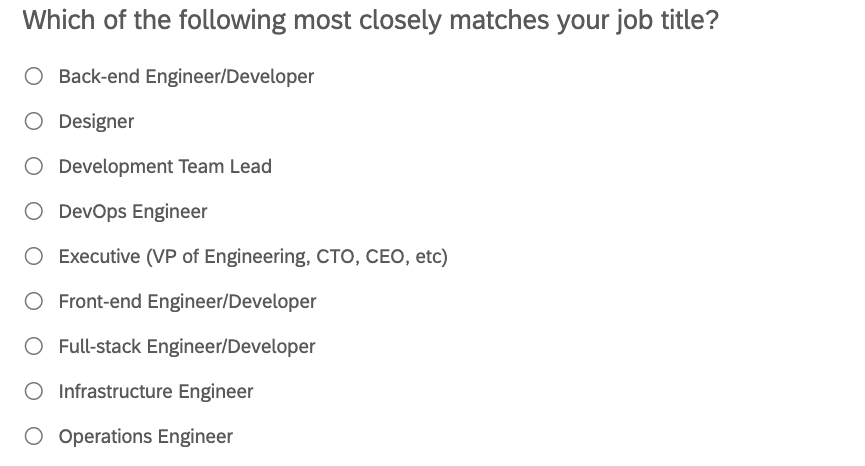
On the other hand, it doesn’t allow users to fully express their thoughts on the topic — they’re forced to stick to the rigid structure. Also, if none of the options describe their experience, they may decide to ignore or skip questions altogether, leading to incomplete surveys.
Open-ended questions and free-form feedback
This type of survey prompts respondents to provide free-form text answers or complete testimonials. This is the best way to obtain detailed feedback and articulated opinions. Open-ended questions invite users to use their natural way of expressing thoughts and describing events.
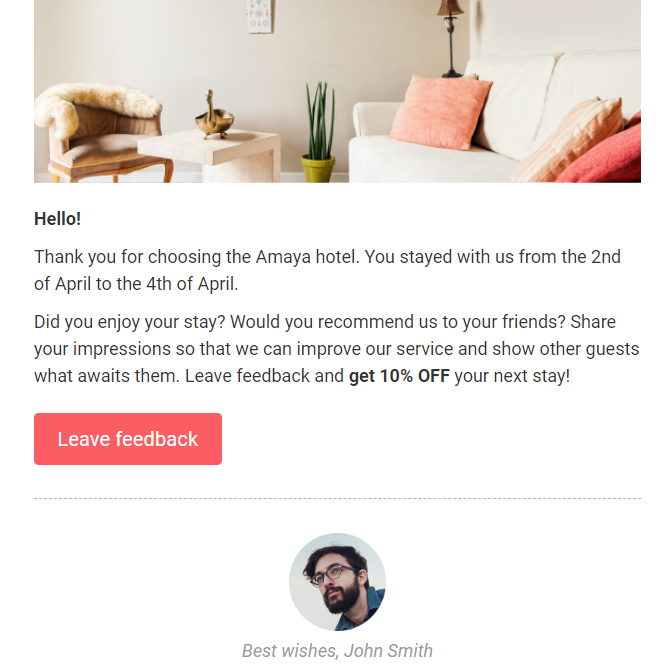
On the flip side, providing free-form feedback takes more time, so it’s reasonable for businesses to use incentives to encourage their customers to write detailed reviews. Some participants may feel uncomfortable expressing their thoughts without the guidance of predefined options. Also, if you don’t provide your respondents with some sort of structure, they may unintentionally forget or omit crucial details.
Create your free account now and try our easy drag-and-drop email builder, customizable templates, and automation features.
Customer studies and user interviews
Both of these formats provide rich, detailed, and qualitative insights into customer experiences, preferences, and needs. They help uncover the underlying motivations and emotions that drive customer behavior. Direct interaction allows you to clarify ambiguous responses on the spot, ensuring a more accurate interpretation of feedback.
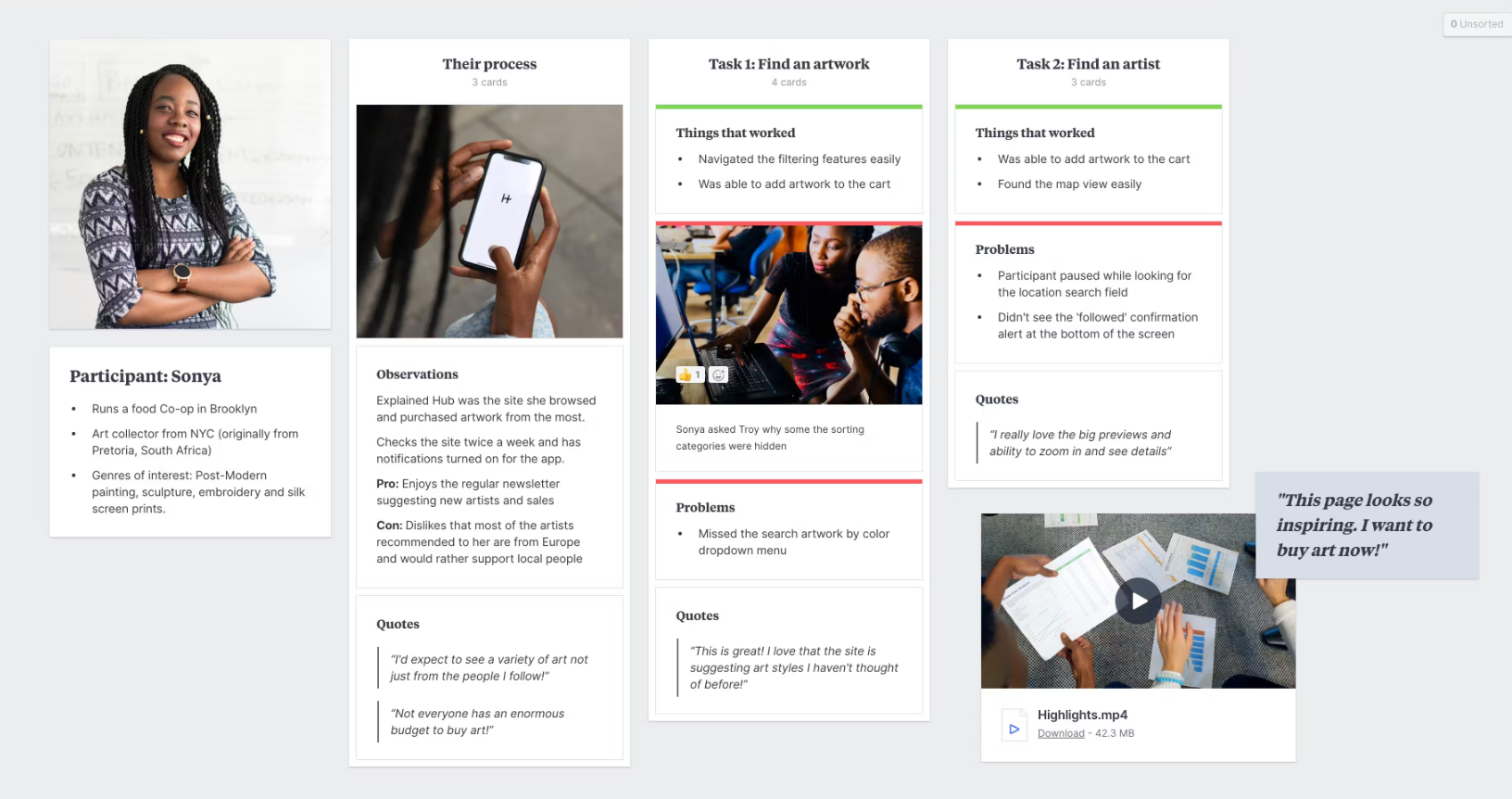
On the other hand, conducting customer studies and interviews is resource-intensive in terms of time, manpower, and costs. Because the sample size is often limited, you can’t extrapolate those results to a larger audience. Lastly, customers may not always provide honest feedback due to a desire to please the interviewer.
Polls
Polls allow respondents to vote for one or several options. They usually include just one question and are useful for rapid data collection, making them suitable for time-sensitive feedback needs.

Polls are relatively easy to set up, distribute, and interpret. Participants can provide feedback anonymously, encouraging more honest responses, especially when addressing sensitive topics. The main downside is that polls are typically limited to closed-ended questions and may lack context, providing less depth.
Video surveys
You can ask in-depth questions regarding your products or services and invite your respondents to share their thoughts via video. The video format helps capture visual and emotional expressions, providing richer insights compared to text-based responses. You can observe real-time behaviors and reactions, gaining immediate insights.
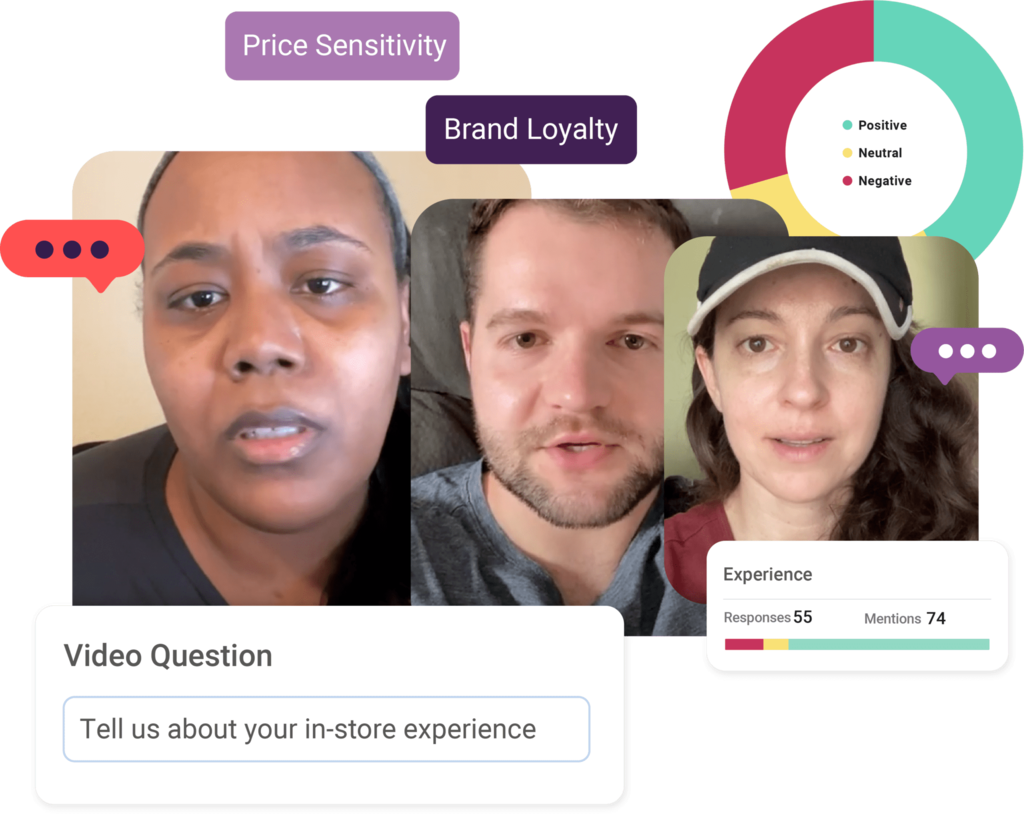
Video surveys are also more engaging for participants — the format allows them to narrate their experiences or provide feedback in a storytelling format. The main reason they aren’t used ubiquitously is that video data is hard to quantify and analyze at scale.
Another reason is that participants may alter their behavior or responses when aware of being recorded. Also, recording and interpreting videos is time-consuming and pricey, so it’s usually reserved for discussing complex, high-value products and experiences.
Gamified surveys and quizzes
There are multiple ways to gamify surveys, depending on the tools that you use. For instance, some survey platforms enable you to grant your active respondents badges, which they can turn into discount coupons or bonus points. Others offer the option of turning questionnaires into quizzes with progression bars, customized backgrounds, scores, and personalized end pages.

The downside of this survey type is that it doesn’t provide you with rock-solid, reliable, and easy-to-interpret data. Some of the answers may rather be superficial as people tend to take games less seriously. In addition, game elements may not be universally appealing or culturally sensitive, potentially alienating certain demographics.
Rating scales
With this type of survey, respondents rate items on a numerical scale (e.g., 1 to 5). Some surveys offer a numeric scale from 1 to 10 to introduce more nuance. These scales are often used to gauge customer satisfaction, product feedback, or employee engagement. They’re great for understanding customer sentiment and help keep surveys brief and to the point.

That said, rating scales may provide limited depth and oversimplify complex opinions, so it’s better to reserve them for straightforward, one-dimensional questions. The interpretation of rating scales may be influenced by cultural differences, too. Finally, this format can’t capture the emotional nuances and subjective experiences that participants may want to express.
Likert scales
This type of rating scale deserves a category of its own because of how popular it is in online surveys. Likert scales let participants quickly indicate their level of agreement or disagreement with a statement, typically ranging from “Strongly Disagree” to “Strongly Agree.” These scales come in handy for attitude assessment, opinion polling, and employee feedback.
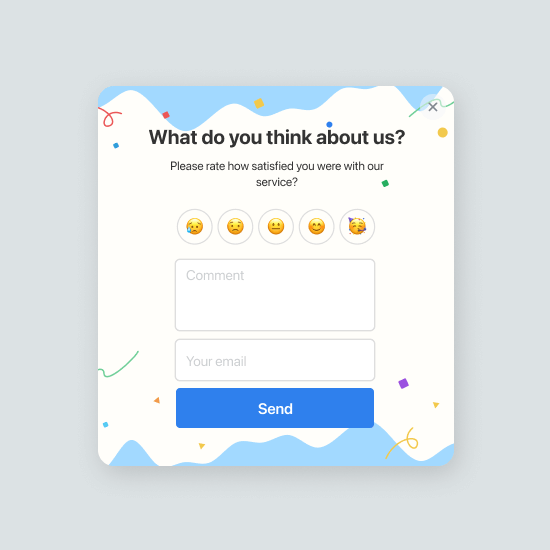
Another added benefit of the Likert scale is that you can introduce emoji answers, which tend to feel more engaging and informal. But, the aforementioned drawbacks still apply here — these scales lack granularity and may struggle to capture the whole scope of customer opinions.
Net Promoter Score (NPS)
NPS surveys measure the likelihood of recommending a product or service, and they may include rating scales, Likert scales, or some other form of expressing agreement or disagreement. The ultimate goal of NPS surveys is to identify customers who are not just satisfied but are true promoters willing to recommend the brand to others.

While NPS surveys may have the same drawback as regular rating scales, it’s not always the case. You can tweak and optimize them to make sure they capture the entirety of customer sentiment. NPS surveys can include open-ended questions, emoji reactions, and more.
Ranking questions
Surveys with rankings questions invite respondents to prioritize or rank a set of options. This format makes a lot of sense for studying feature preferences, conducting product comparisons, and setting priorities.

The main disadvantage of this survey type is that respondents may get overwhelmed when asked to rank a large number of items. They may also feel limited in their ability to express nuanced preferences. Finally, the order in which items are presented can affect respondents’ rankings.
Matrix questions
A matrix survey groups multiple related questions into a grid format, presenting respondents with a sophisticated questionnaire. This format is usually reserved for assessing multiple aspects of a single topic and in-depth data collection. By grouping similar items into a matrix, you can reduce the survey length and respondent burden.

Long matrix questions with numerous items can lead to respondent fatigue, which is something to keep in mind. Such surveys may not be well-optimized for mobile devices, leading to usability issues and survey abandonment. Also, participants may exhibit acquiescence bias, where they consistently select the same response option without thoroughly considering each item.
Slider scales
This is a slightly more interactive and dynamic version of a rating scale. With this survey type, respondents adjust a slider along a continuum to indicate their response. It helps with the visual representation of preferences or opinions, especially when you want to understand the general customer mood without delving into details.

Slider scales definitely lack standardization compared to traditional Likert scales. With them, you are more likely to face challenges in quantifying responses precisely. Respondents may misinterpret the slider’s position or struggle to accurately place it at their intended rating, causing response errors.
Dropdown menus
Another common type of survey is when respondents choose from a dropdown list of options. This enables the compact representation of multiple choices, minimizing clutter and keeping surveys visually clean and straightforward. Dropdown menus are great for minimizing the risk of typos and speeding up survey completion.

If the dropdown menu includes an extensive list of options, respondents may experience option overload or get frustrated with having to endlessly scroll through them. The order in which options are presented in the dropdown menu can also influence respondent choices, spoiling your data. While dropdown menus are efficient, they may be perceived as less engaging compared to more interactive response formats.
Checkboxes
Checkboxes provide flexibility for respondents to select multiple options from a list of choices, allowing them to express diverse preferences or opinions. This format is familiar to most users, creating a user-friendly and accessible survey experience.

At the same time, checkbox questions limit respondents to predefined options while potentially overlooking unique or unanticipated responses. If you aim to capture preferences in a specific order or ranking, checkboxes are unlikely to clearly indicate the priority of chosen options.
Image-based questions
Questions with images invite respondents to evaluate or choose from various options presented in an appealing visual way. Images provide context to the questions and can evoke emotional responses. This approach is widely used for visual product assessment and product design feedback.

Naturally, users may interpret images differently, so some variability in responses is inevitable. In addition, nuanced or subjective feedback may be challenging to express through images alone. Creating and managing image-based questions may also be more resource-intensive.
What are the main survey channels?
Last but not least, where you place your pop-ups or how you deliver them also plays a huge role in their success. Let’s quickly go through the essential survey channels and list their advantages:
- Email. It is widely used and easy to automate. This channel allows for personalized communication and can reach a large audience.
- On-page. This channel captures feedback in the context of the user experience. It can target specific website visitors and offers flexibility in survey placement to enhance on-page content.
- Social media. This survey channel offers expansive reach, easy sharing capabilities, potential for viral responses, and engagement with a diverse, tech-savvy audience.
- Chatbot. It’s an interactive and authentic channel that allows for real-time feedback and can provide 24/7 assistance or information, especially with the help of AI.
- SMS. This channel has an immediate reach and high open rates. It’s effective for short, time-sensitive surveys.
- In-app. It offers seamless integration with mobile applications, captures real-time user feedback, and enhances the user experience.
- Video and audio calls. They involve visual appeal, helping to capture non-verbal cues. Besides, surveys across these channels can be more engaging than traditional text-based ones.
- QR codes. They provide quick access via smartphone cameras, are applicable in physical locations, and are easy to implement on printed materials.
You can combine these channels to ensure maximum outreach and diverse responses from your target audience.
Final thoughts
As you can see, the way you ask the question can make all the difference. Pre-defined options help reduce input mistakes and speed up survey completion, while free-form and gamified surveys introduce more flexibility and freedom of expression.
SendPulse can help you create and share appealing surveys with ease. You can also try our chatbot building, email, and pop-up tools for free. We also offer integrations with the most popular CRMs, eCommerce tools, and form builders you probably already use. Go ahead and create your account now to start communicating with your customers more efficiently and better understand their needs!







